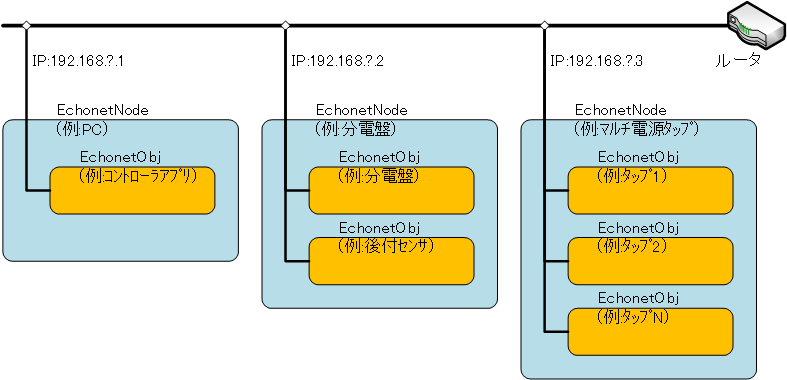先日のシグモイド関数(ロジスティック関数)を用いたtensoflow実装。
というより、↓こちらの Chapter2の写経。
#!/usr/local/bin/python # -*- coding: utf-8 -*- import tensorflow as tf import numpy as np import matplotlib.pyplot as plt from numpy.random import multivariate_normal, permutation import pandas as pd from pandas import DataFrame, Series def make_training_data(): np.random.seed(20160512) # t=1 : 2種の薬(X1, X2)投与による効果がない場合 mu0, variance0, n0 = [10, 11], 20, 20 #平均, 分散, data数 # multivariate_normal() : 多次元正規分布の乱数を生成 # ├ param1 : 平均 # ├ param2 : 共分散行列. np.eye(2)は2x2の単位行列生成 # └ param3 : data数 data0 = multivariate_normal(mu0, np.eye(2)*variance0 ,n0) df0 = DataFrame(data0, columns=['x1','x2']) df0['t'] = 0 # t=1 : 2種の薬(X1, X2)投与による効果がある場合 mu1, variance1, n1 = [18, 20], 15, 22 #平均, 分散, data数 data1 = multivariate_normal(mu1, np.eye(2)*variance1 ,n1) df1 = DataFrame(data1, columns=['x1','x2']) df1['t'] = 1 # 2個の行列を連結(≠結合) df = pd.concat([df0, df1], ignore_index=True) train_set = df.reindex(permutation(df.index)).reset_index(drop=True) # train_setに含まれるx1, x2, t列を{x1, x2}と{t}に分割 train_x = train_set[['x1','x2']].as_matrix() train_t = train_set['t'].as_matrix().reshape([len(train_set), 1]) return train_x, train_t # 予測関数作成 def make_predict_func(): x = tf.placeholder(tf.float32, [None, 2]) w = tf.Variable(tf.zeros([2, 1])) w0 = tf.Variable(tf.zeros([1])) f = tf.matmul(x, w) + w0 # f(x) = wx + w0 ※w,x,w0はいずれもベクトル p = tf.sigmoid(f) # シグモイド関数 = ロジスティック関数 return p, w, x, w0 # 誤差関数 def make_err_func(p): t = tf.placeholder(tf.float32, [None, 1]) # 最尤推定を行う誤差関数 loss = -tf.reduce_sum(t*tf.log(p) + (1-t)*tf.log(1-p)) # 勾配降下法によるトレーニングアルゴリズム train_step = tf.train.AdamOptimizer().minimize(loss) # pとtの符号で比較する為、-0.5を実施 correct_prediction = tf.equal(tf.sign(p-0.5), tf.sign(t-0.5)) # reduce_mean()とはベクトルの各成分の平均値算出 accuracy = tf.reduce_mean(tf.cast(correct_prediction, tf.float32)) return loss, t, train_step, accuracy def main(): # トレーニングデータ train_x, train_t = make_training_data() # 予測関数 p ,w, x, w0 = make_predict_func() # 誤差関数 loss, t, train_step, accuracy = make_err_func(p) # セッション作成 & Variable初期化 sess = tf.Session() sess.run(tf.initialize_all_variables()) # 勾配降下法によるパラメーター最適化 i = 0 for _ in range(30000): i += 1 sess.run(train_step, feed_dict={x:train_x, t:train_t}) if i % 2000 == 0: loss_val, acc_val = sess.run( [loss, accuracy], feed_dict={x:train_x, t:train_t}) print ('itep: %d, loss: %f, accuracy: %f' % (i, loss_val, acc_val)) # 結果(w0, w1, w2)の取り出し w0_val, w_val = sess.run([w0, w]) w0_val, w1_val, w2_val = w0_val[0], w_val[0][0], w_val[1][0] print "w0:", w0_val, " w1:",w1_val, " w2:",w2_val if __name__ == '__main__': main()
↑こう書くと↓こう表示されます
$ ./foo_2.py itep: 2000, loss: 17.505960, accuracy: 0.857143 itep: 4000, loss: 12.778822, accuracy: 0.928571 itep: 6000, loss: 9.999125, accuracy: 0.928571 itep: 8000, loss: 8.244436, accuracy: 0.976190 itep: 10000, loss: 7.087447, accuracy: 0.952381 itep: 12000, loss: 6.303907, accuracy: 0.952381 itep: 14000, loss: 5.765183, accuracy: 0.952381 itep: 16000, loss: 5.393257, accuracy: 0.952381 itep: 18000, loss: 5.138913, accuracy: 0.952381 itep: 20000, loss: 4.969873, accuracy: 0.952381 itep: 22000, loss: 4.863929, accuracy: 0.952381 itep: 24000, loss: 4.804683, accuracy: 0.952381 itep: 26000, loss: 4.778569, accuracy: 0.952381 itep: 28000, loss: 4.772072, accuracy: 0.952381 itep: 30000, loss: 4.771708, accuracy: 0.952381 w0: -21.0061 w1: 0.849911 w2: 0.621193

